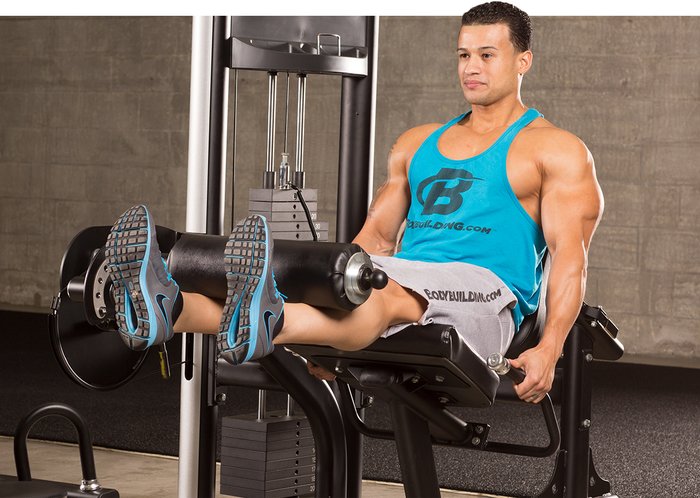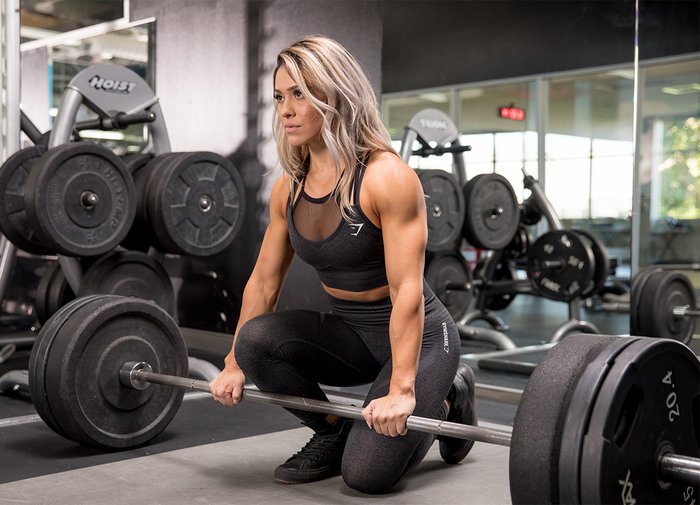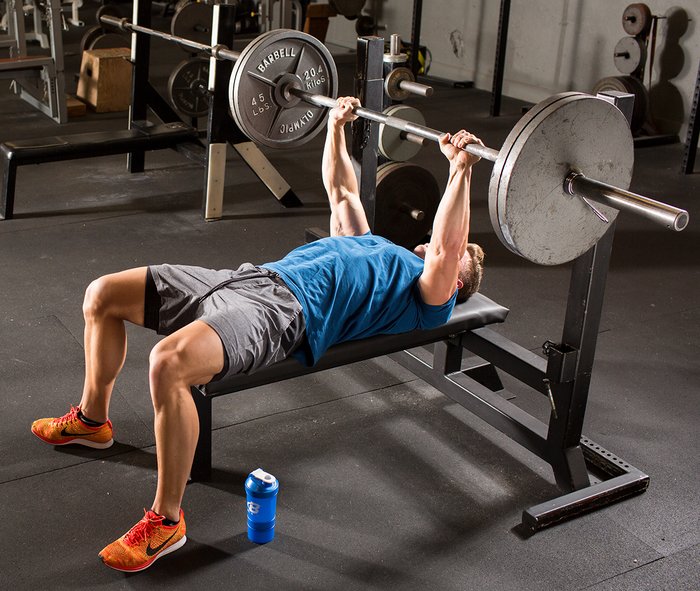If you want to know if you're strong—or not strong, for that matter—you can easily find people online who are quite willing to tell you, in no uncertain terms. The fitness industry, and fitness culture in general, is saturated with standards that "prove" that you're hardcore enough to hang with the big dogs.
I get the appeal of big goals, big muscles, and big lifts, but only when they're earned through hard work—not when they're chased at the expense of life and limb. If you're trying to "hack" your way to the 1,000 club, an ego check is just what the doctor ordered to keep your gains on track while staying injury free.
1. The Right to Train for High Reps
I'm not talking about super-light sets of triceps kick-backs here. Twenty-rep squat protocols and marathon bench sessions have an allure going back decades. They seem to promise that if you're just mentally tough enough to last all the way through the set, you'll be rewarded with near-magical, Instagram-worthy gains.
If only it was as simple as being mentally tough! Truthfully, your potential for injury only increases as the amount of time you spend in a working set increases, for obvious reasons. Once you place your body under load for an extended period of time, the anaerobic system runs out of steam, lactate starts to gain control, and the muscles begin to shut down. All of a sudden, a movement that started out working certain muscles is overly relying on others—and things can go south in a hurry.

In my opinion, higher rep training, as great for conditioning and hypertrophy as it can be, should be reserved for intermediate lifters who have good awareness of their body and a sound strength to build upon. Novice lifters need to earn their way to this point by training for strength first, and generally keeping to sets of no more than 6 reps.
Let the slightly heavier weights teach you! Mastering lifts with good form using lower reps is great for developing strength, stimulating the CNS to release more hormones, and even putting on initial size gains.
2. The Right to Go Heavier
Hold on a minute… Didn't I just say that lifters needed to earn the right to lift for high reps? How can they avoid high-rep training and not lift heavy?
Simple: They don't push their max. Stop me if you've heard this before, but there's a big difference between "low-rep sets" and "brutal singles with the heaviest weight you can handle."

Just as an example, let's say you're confident you can squat 250 pounds for 5 typical, no-doubt reps, as your 5RM. Instead of seeing how much you can squat for just 1 or 2 reps, or pushing for a haphazard sixth rep with questionable technique, why not go the other way, and redefine your 5RM?
Take that 250 pounds and drop 15 percent of the weight off the bar. That should put you around 210. Now, try to perform the same 5 reps using a 42X0 tempo, or 4 seconds down, a 2-second pause at the bottom, and a strong concentric phase. Performing your reps this way will create a whole new 5RM that leaves that original 250 in the dust.
I talked about this in depth in my article "Stop Maxing Out! Lift This Way Instead," but demonstrating that you can own weight in lighter loads is a great way to set your own standard of achievement before throwing more plates on the bar. No one says the maxes you train with have to be your true maxes, as long as you're working in the name of quality and training effect.
3. The Right to Get Serious About Supplements
I'll leave the detailed nutrition articles for the true experts of that subcategory of this field. But I will say this: the word "supplement" implies you're following a fairly proper and rounded diet that's only enhanced by their use. Likewise, if you're constantly jacked up on epic amounts of caffeine every time you train, it's going to be that much harder to say no to that ill-advised max-effort rep.

Wanna have a shake post-workout? Take creatine? Hey, whatever—I won't get in the way. But don't think for a moment that either one will have nearly the same effect that your overall dietary approach does. Supplements should never replace whole foods—you've been told that before. But they also shouldn't be your way of avoiding good eating habits in general. Not enough people have heard that.
Eat good foods, eat them consistently, and learn how to get your recommended amount of calories and protein for the day pertaining to your specific goals. You can get amazing results just by doing this—and you should, before adding any particular "stack" to the mix.
4. The Right to Use Complex Movements
There's a big difference between compound movements and complex movements. A compound movement is a vital and essential tool for any beginning trainee to master, as it can help them understand primal patterns and give them proper kinesthetic awareness. Compound movements allow for multiple joints to be involved in the lift at the same time, which also helps the brain learn to master proper form and technique. And as I explained in my article "3 Advanced Lifting Techniques That Are Great for Beginners," once you have the basics down, there's a lot you can do with these movements to keep them fresh.
A complex movement, however, is a different animal. Where a compound lift like a squat involves simultaneous movement at the ankle, knee, and hip joints, a complex movement like a clean or snatch involves multiple phases, of which compound movements are mere derivatives. A heavy squat clean is a deadlift, a squat, a high pull, and plenty else put together.
Simply put, these kinds of movements are too advanced for beginners to be practicing without a very thorough understanding of how to hinge, squat, lunge, pull, push, or carry. It's extremely important that this process isn't rushed. If you can't perform excellent front squats, you have no business attempting full cleans or clean and jerks.
5. The Right to Lift Every Day
Eager beavers will often be the first ones to neglect this piece of advice, arguing that it's simply an extension of training hard, training often, and staying dedicated to see results. In an ideal world, they'd be right. But precious few of them—or us—live in an ideal world for fitness.
Training effectively seven days a week requires a lifestyle that fosters that output. That means everything outside of the gym must harmonize with this decision—rest and recovery in particular. If you're only catching five hours of sleep a night, working a stressful job that keeps you in the office 50-60 hours a week, and following an inconsistent diet that's mediocre in quality, you're wasting your time, and probably overtraining, too.

Start with three days of solid training per week, or "every other day," which comes out to about the same volume. Give your body a chance to acclimate to regular training at the beginning, and maybe after the beginning, too.
The bigger the commitment you make to getting in the gym daily, the bigger the commitment needs to be to taking care of your body to make such an endeavor is sustainable. Either that, or you'll burn out. Don't burn out. And if you do, don't say I didn't warn you.

